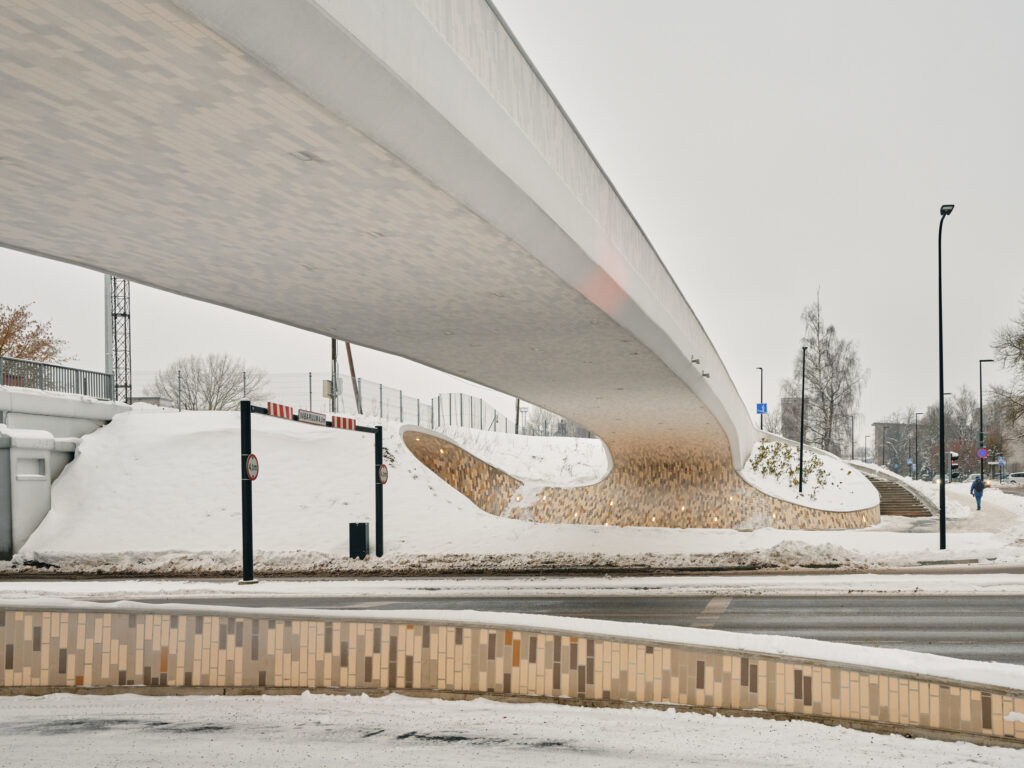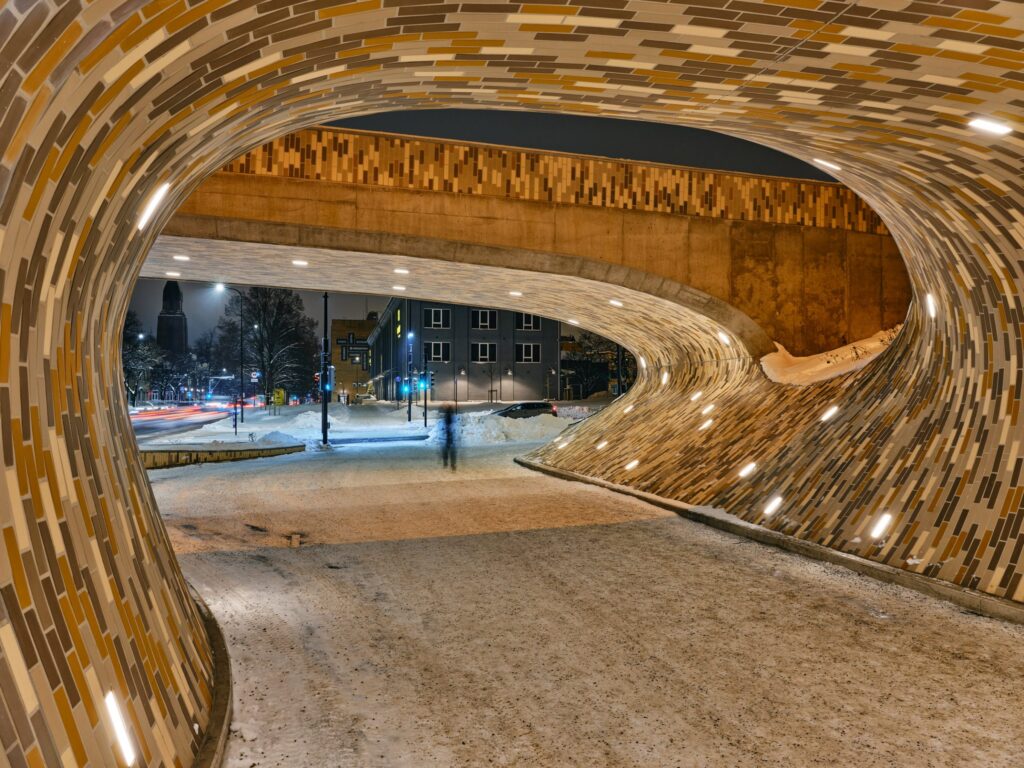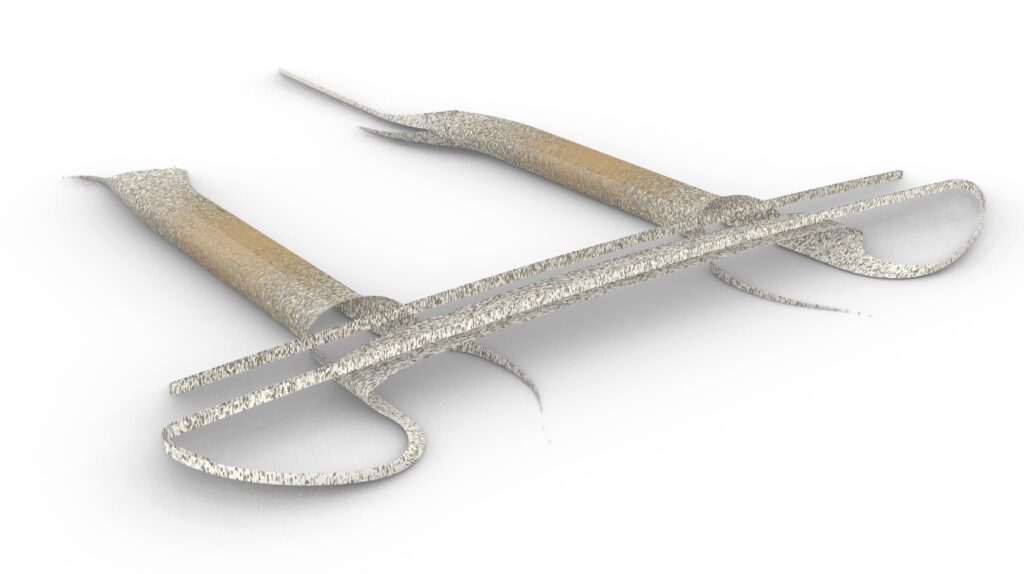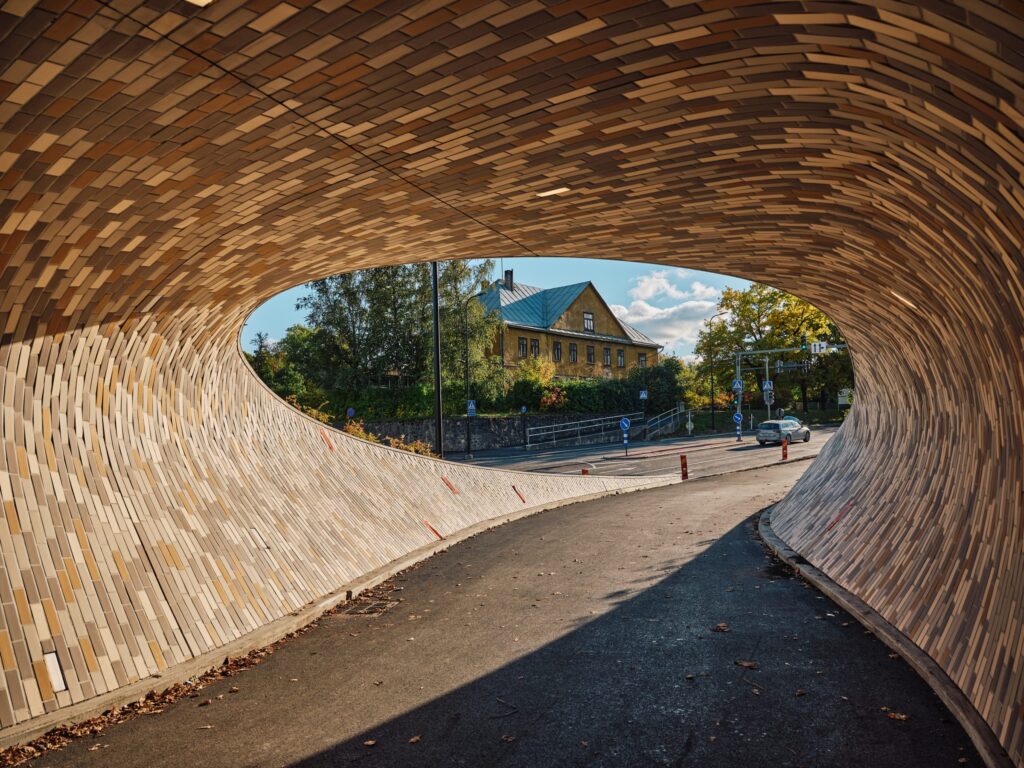The Vaksali pedestrian bridge and underpasses in Tartu, Estonia’s second-largest town, have been shortlisted for the 2024 European Union Prize for Contemporary Architecture, the Mies van der Rohe Award.
The pedestrian crossing, called “the Son of a Shingle”, is a multi-level urban link consisting of a bridge and two tunnels. The project is defined by a soft, undulating skin that follows the continuity of movement and is covered by 100,000 clinker shingles. It aims to be a landmark in the landscape, encouraging people to walk and cycle by creating an attractive waypoint.
The bridge was built in 2021 and was designed by Sille Pihlak and Siim Tuksam of Part Architects.

“In recent years, this pedestrian crossing has proven to strengthen the connections between two neighbourhoods, with more cyclists and pedestrians in the area than ever before, changing the traditional car-centric traffic of the area. Above all, this infrastructure project is a landmark in dealing with climate change and global security issues,” said the award website.

The project’s architects said that, due to climate change, the area under the bridge was flooded for almost a few months a year, making it impassable for most people. “With two new tunnels and a bridge, we were also able to ensure faster movement in case of emergency and better connect the bicycle network of Tartu,” they said, according to the Mies van der Rohe Award website.
“Movement in urban space should be smooth and easy, but ideally the environment should also offer different experiences. This will reduce cognitive distances and perhaps encourage more people to walk. So we decided to make the bridge and tunnel into a single landscape ensemble that does not dominate, but stands out. It encourages you to experience it directly, rather than admire it from a distance.”
Forty works selected from 362 nominees
To achieve the desired result, the architects used an unexpected material for the tunnel and the bridge’s railings: ceramic shingles.
“In addition to creating form, we wanted to emphasise the human scale elements of urban infrastructure. The 100,000 shingles are coloured in four shades, from silver to honey, depending on the amount of UV radiation that falls on them. As a result, the grey bricks blend with the concrete elements outside, while a warm atmosphere is created inside the tunnel, supported by the curved shape of the shingles and the lighting solution,” the architects said.

In total, 40 works were selected by the jury from 362 nominees. The shortlisted works are located in 38 European cities in 20 different countries.
“The selected projects go beyond their facades, there is a position on the reason for the existence of each construction, who it should serve and the responsibility to make it available to society,” a jury member was quoted as saying.
The finalists will be announced in February and the winners in April.

Six Estonian projects nominated
The EU Prize for Contemporary Architecture was launched in 1987 through a partnership between the European Commission, the European Parliament and the Fundació Mies van der Rohe, the Barcelona-based foundation that honours the work of the German-American modernist architect Ludwig Mies van der Rohe (1886-1969) and the German designer Lilly Reich (1885-1947).
The Prize recognises and rewards excellence in European architecture in conceptual, social, cultural, technical and constructive terms, and promotes transnational architectural commissions throughout Europe. It also aims to increase the involvement of architectural professionals from EU member states and the union’s partner countries. In addition, the award highlights the European city as a model for the sustainable smart city, contributing to a sustainable economy across the continent.
Five other architectural projects from Estonia were among the 362 nominees for the European Union Prize for Contemporary Architecture 2024: Woodworking and Technology Centre in Rakvere, Tondiraba Nature Park in Tallinn, Restaurant 0 in Viljandi, Mustjala Nursing Home and Day Care Centre, and Viimsi Artium.

